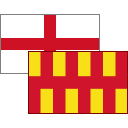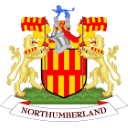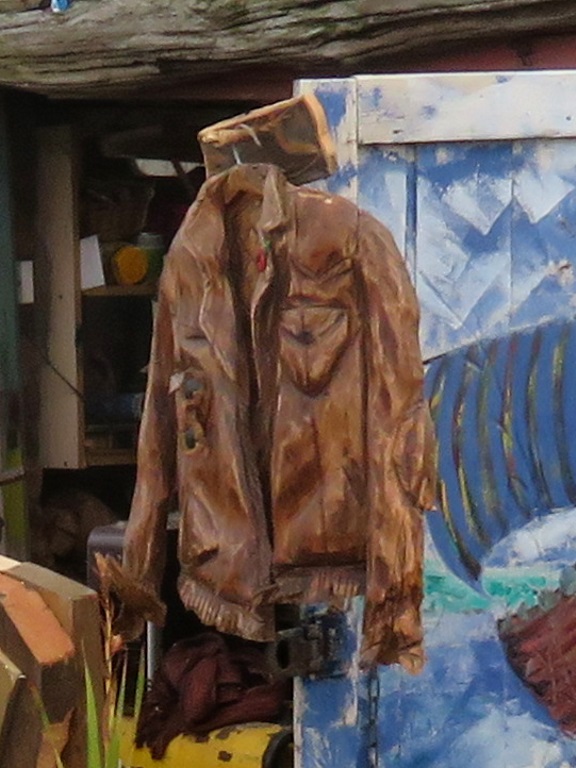
Seaton Sluice
Nov 2017
>
 Nov 2017+
Nov 2017+

sǣ (by the) sea + tūn Old English farmstead, settlement + sluse Middle English sluice, floodgate. Population - 3,081.
 UK
>
England
>
Northumberland
UK
>
England
>
Northumberland
Nov 2017+

If the word sluice makes you think of an abattoir floor then think again because you're in for a pleasant surprise. That'll be the sluice gates, of course, used to hold in the tide when it was all shipments of salt and coal round here.
The natural harbour was never really deep enough, you see, and it was prone to silting, they say, so in a remarkable feat of 1760s engineering, they cut a new, artificial channel.

They, by the way, were the wealthy Delavals and for the purpose of their mercantile interests but more on them in a minute.
The gates are long gone and it's all been blocked off with rocks to stop smugglers, no doubt, from sneaking their wares in from the Atlantic.


Yes, it's known not to be in Cornwall but the whitewashing makes it look a little like it could be even though it's just north of North Tyneside.
This, not so recently, whitewashed building is the old coastguard lookout station.

It's a seasonal and voluntarily run museum now standing on what's known locally as 'Rocky Island' and was the inspiration for Father Ted, possibly.
Local resident and, erm, 'Medical Herbalist' Anita Romer swapped base oils for oil paints in 2015. She promotes the benefits of plants that heal in an old bus shelter next to the World War I Memorial Garden.


It's part of an Arts Council funded project and one of several in the surrounding villages, which hopefully make the wait for a bus to Blyth bearable.
Opposite the bus shelter, don't be fooled by the plain exterior because, once inside, this is now officially the cosiest, little tea-shop in England, scratch that the UK, scratch that the world!

There's more local artwork hanging on the walls and the intricate illustrations of David Hall really are a piece of work.
There's an artsy undercurrent to the whole place, actually, and the Tower House Gallery is home to a rolling display of local artists' work although you'll have to wait until a Wednesday to gain entrance.

There are rumours this 18th-century octagonal building was briefly used as a mini Martello tower, of sorts, should Napoleon have ever included Whitley Bay in his European vacation plans.
Its construction was funded by the landowning Delaval family but more on them in a minute.
Next to the Tower House Gallery, the distinctive Waterford Arms displays its date of birth as 1899 and is now where Google™ Maps says it is.

Inside they serve a rather gimmicky 32oz 'Whale' of a cod, which won't see you with much change from a £20, but what's that you ask? Of course not!
There's no time for that today but, from memory, their 'large', albeit unspecified species, could still feed a family of four.
Notoriously good fish and chips in the region and the sensible alternative to a 'Waterford Whale'.
Over at the cliffs, this offshore stack is known locally as 'Charlie's Garden' after someone who thought its top to be a good spot for an allotment.

Nonsense or not, it's now known to be a resting place for a cormorant although you'll have to look very closely for that.
The cliffs run on and off south to Tynemouth and some defending of Collywell Bay has been necessary with the sea wall as recent as 1981.


The residents of the same named road are grateful for that since it stops their gardens ending up next to Charlie's.
A warm welcome awaits at the King's Arms, which sports a proper beer garden whereas the Waterford doesn't.


That's a hint to this whole place's popularity in summer but one will have to wait a while to fully find out why.
You might well be wondering what's with the items that have been scattered mainly around the harbour, some hung more daringly than others?


They're the work of Tom Newstead, another local artist, who works out of a rather ramshackle studio behind the Kings Arms and you're welcome to wander in and around, he says.


A former boat builder, Tom specialises in wooden sculptures and his hanging jacket is fantastic but he wasn't that forthcoming today and has rather more to say for himself here.
Remember them Delavals? Following the Norman conquest of England, the de la Vals were gifted land in Northumberland for their help in putting Harold's eye out.
The Loire Valley interlopers prospered here until 1814 when, with the end of the line, the estate passed to the wealthy Astley family thanks to some cunning and strategic marrying, maybe.
Just over two miles west, Seaton Delaval is not known just for the family that named that toon, although it's more of a large village, really, but for a particular variety of Pitmatic, a dialect that was spoken mainly by miners in and around the coalfields of the North East.
It was said that folk from two miles away didn't even understand this strain so, no change there then. Don't be asking for directions to Seaton De-La-Val while you're passing, however, it's pronounced more Della-Val since they don't really do French here.
French no but Italian yes and they're queuing round the block most days at Arrighi's ice-cream parlour but Seaton Delaval Hall is the main attraction.
The pad was home to the Delavals for centuries but this lavish construction didn't appear until the 1720s and fire nearly saw to it 100 years later. It's National Trust™ run so even though relations are less strained, these days, it's unlikely SlyBob will be parting with £15 anytime soon.
The Astley's have links to Melton Constable, a large village in North Norfolk, which accounts for the mysteriously named pub that can be found on the other side of the main road through.

Wetherspoon™s would be getting a (5/5) for that name but it's not a recent rebrand. This one has been here since 1839 and pips the Waterford Arms by 60 years.
On Christmas Eve 1939, some of the crew from a submarine docked in Blyth popped into the Astley Arms just north of here for a pint. A bottle of whiskey was won in the raffle by Petty Officer 'Tug' Wilson who asked them to hang onto it until his return.
Of course he died, sunk by a mine just off Jutland, probably, where else did you think this was going? 'Tis a true tale though and the bottle is now on display in the Royal Navy Submarine Museum down in Gosport, no less.
Things have been rather booze heavy of late so let's take a walk to clear the head. This Rocky Island is another artificial creation, conceived when they cut 'The Cut'.
Follow the clifftop path behind the Watch House to head down with this sort of thing but careful now, there's a danger of death by dying.


The tide's not onside today but when it is fully out, the rocks transform into an area of old-skool pools and a variety of watery wildlife is revealed. Limpet? Not really, the path down is quite flat and you're unlikely to twist an ankle.
Concrete now guards the mouth of what couldn't quite cut it as the harbour before they cut 'The Cut'.

Unless you're in the habit of chatting to lonely fisherfolkmen, it's a dead end down there and there's no other option than to head back up to the bridge by the shorter path along the river.
Back up and there's no point trying to talk to this salty, old sea dog who looks to have been on the King's Arms' grog from very earl-eye in the morning.


Not unless he too has been hypnotised by the small boats bobbing on the ebbing tide. There's not a lot not to like about this place and goes some way to explaining why it's such a draw in summer.
Back over the main road bridge and from the top of 'Ballast Hill', mountainous sand dunes and the, not unimpressive, beach even if the view is up to the industry at Blyth.


It's not a real hill but made up of ship's ballast, dumped in the day to make room for the outgoing cargo. They'd later build on here and a small community thrived, they say, with the rocky foundations evidence of that.
It was at that time that local estate agents got wind, probably, and rebranded the area as 'Sandy Island' even though it's not even an island but when did a small detail like that ever get in their way?
Behind the Melton Constable pub, there's a track down to Seaton Burn, which is the same water that's already been seen running into the sea.

Salt production was once a thing here at what was then called Hartley Pans.


It's now part of a nature conservation site where some of the wildlife is more animated, and admittedly blurry, than others.
There's a five-mile loop inland on foot through Holywell Dene, if you fancy, where highlights include the inevitable heron and a 'castle', neither shown.

That, however, nearly makes for a full day out so with nothing else of much interest along Beresford Road it's back to the car and time to say sayonara to Seaton Sluice for now.
The Delavals were a notorious, roister-doister'ing bunch and Sir Francis Delaval accepted a bet in 1750 to build a house in a single day. It's not known whether he got his hands dirty with either the construction or the mandatory lady-friend who was the intended recipient.
It's hidden two miles up the burn and supposedly named from the time of day that the cement mixers were sent spinning but, nonsense or not, you've got to love them old toffs, eh?
If that's Seaton Sluice supposedly done then why more waffle?

There's waffling to be done because Bob's reminiscing, reminiscing about the family holiday taken here in the '70s.
Family holiday? But wasn't it less than eight miles by flying crow door-to-door? Yes, but without a car back then, navigating over, around or even under the River Tyne with two full suitcases was a full day's travel itself.
Aaah, remember the summer of '76? The Montreal Olympics, the sun shone forever and the drought meant you didn't flush the toilet each time. The beach was Copacabana, Seaton Burn and Holywell Dene was the Amazon Rainforest and the rockpools could have been the surface of the moon, just with seawater and crabs on it.
If you're from the area and you've not knowingly been to Seaton Sluice then it's likely you know it already. It's under the direct flight path into Newcastle United International Airport, you see, but why bother jetting abroad when there's everything here that a nine-year-old needs?
The shoring up's already been done so all they need is a new, all-inclusive clifftop resort with as many Waterford Whales as your greedy gullet can handle but saying that...
Seaton Sluice? Somebody seriously needs to think about that name.